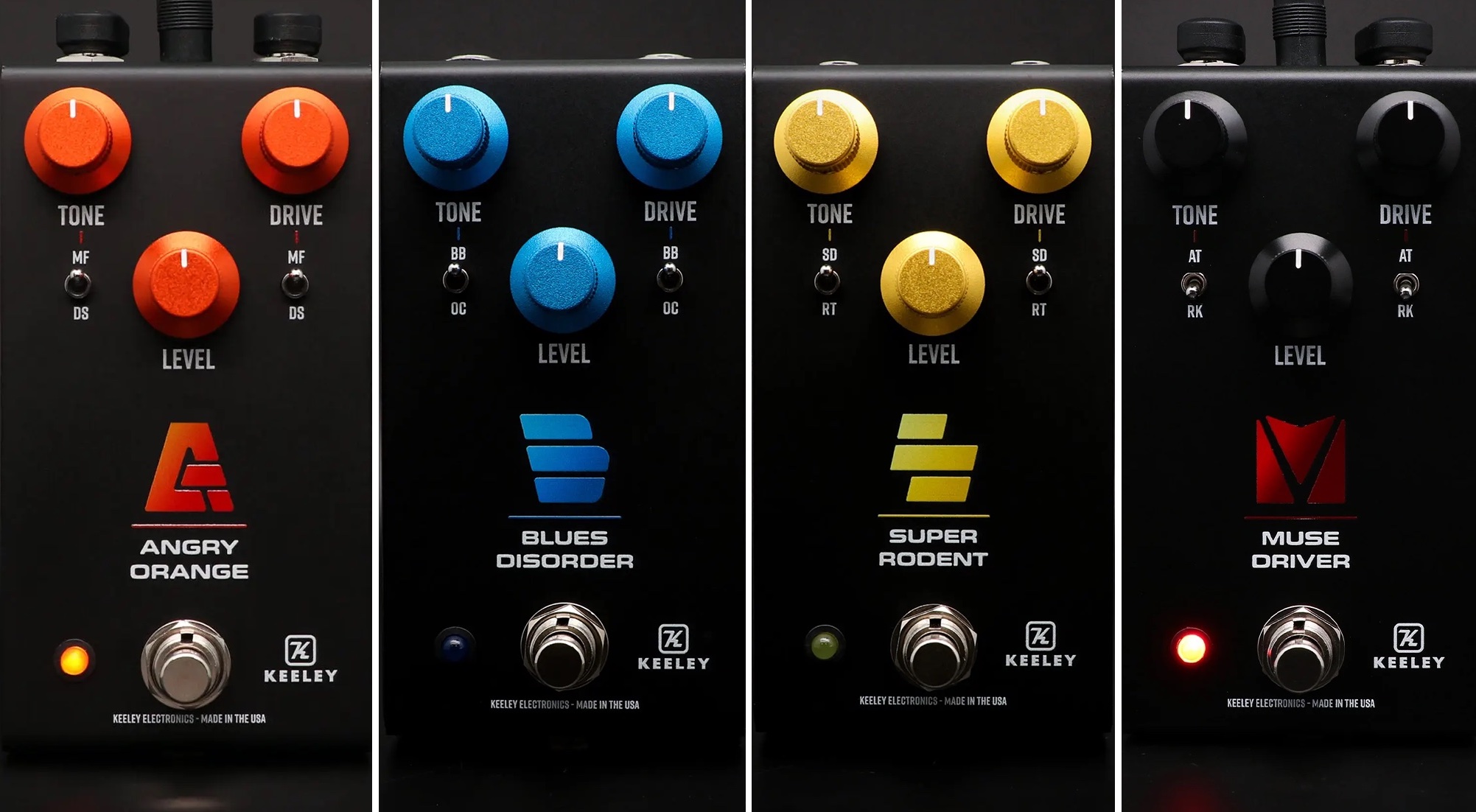GuitarPlayer Verdict
You could be excused for glazing over yet another batch of pedals trumpeting different flavors of grind, but these new boxes from Keeley have a cool twist in their ability to mix and match different drive and tone stacks, enhancing their sonic range and flexibility in the process.
Pros
- +
Expanded tonal ranges via the ability to swap drive and tone circuits.
- +
Easy-to-grab skirted metal knobs with ribbed barrels.
- +
All pedals run at 9 to 18 volts, giving you the option of more volume and headroom at higher voltages.
Cons
- -
None.
You can trust Guitar Player.
You could be excused for glazing over yet another batch of pedals trumpeting different flavors of grind, but these new boxes from Keeley have a cool twist in their ability to mix and match different drive and tone stacks, enhancing their sonic range and flexibility in the process.
The Angry Orange, Blues Disorder, Muse Driver and Super Rodent are each based around two distinctly different distortion circuits, but they share a control format consisting of three skirted metal knobs and a pair of two-position mini toggles that perform different functions, depending on the model. The knobs are fairly tall and have ribbed barrels that make them easy to grab if you need to make mid-song tweaks.
The wedge-shaped aluminum housings have front-mounted input, output, and power jacks, and a press on/off mechanical footswitch that defaults to a buffered bypass, but can be changed to true bypass by holding down the foot switch for a few seconds.
This function proved handy for this review, as I could arrange the pedals on a board with the first one set for buffered bypass and the others in true bypass to avoid potential issues caused by stacking buffers in series. In addition, all pedals run at 9 to 18 volts, giving you the option of more volume and headroom at higher voltages if you need or desire them.
I tested these pedals with guitars from Fender, PRS, and Knaggs, and three combo amplifiers: a Fender Deluxe Reverb, a Fender ’48 Dual Professional, and a Vox AC15.
Angry Orange
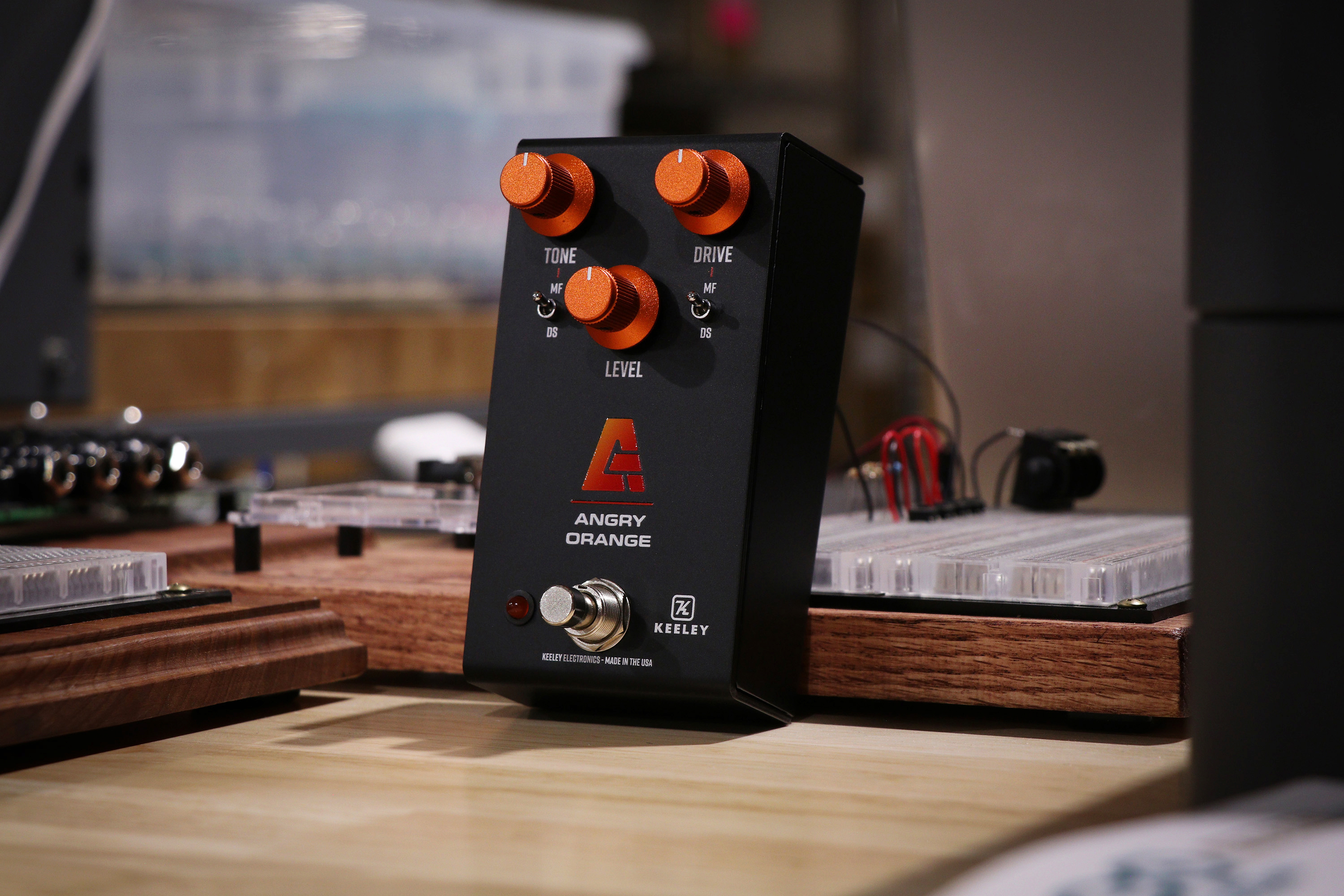
What’s so angry about a pedal that switches between a 1978 Boss DS-1 and a 1991 “Soviet” Big Muff, and lets you swap their drive and tone stacks? That’s the premise of the Angry Orange, which can be configured to deliver classic DS-1 distortion by setting the left-hand tone switch and right-hand drive switches to the downward DS positions – or evoke a fuzzier Muff sound by putting both switches in their upward MF positions.
Switching on the DS tone stack delivers a cool hybrid sound in which the distortion has loads of grimy fuzz character but is smoother and more rounded, thanks to the different EQ curve.
Alternatively, you can combine the Muff tone stack with the DS clipping circuit for a sound that has more presence and is tilted in a midrange-focused direction for a cool blend of fatness and cutting power.
With the drive, tone, and level knobs set, respectively, at around 10 o’clock, 2 o’clock, and noon, the sounds were consistently good, and there was plenty of range on tap for heavier distortion and more output if I required them.
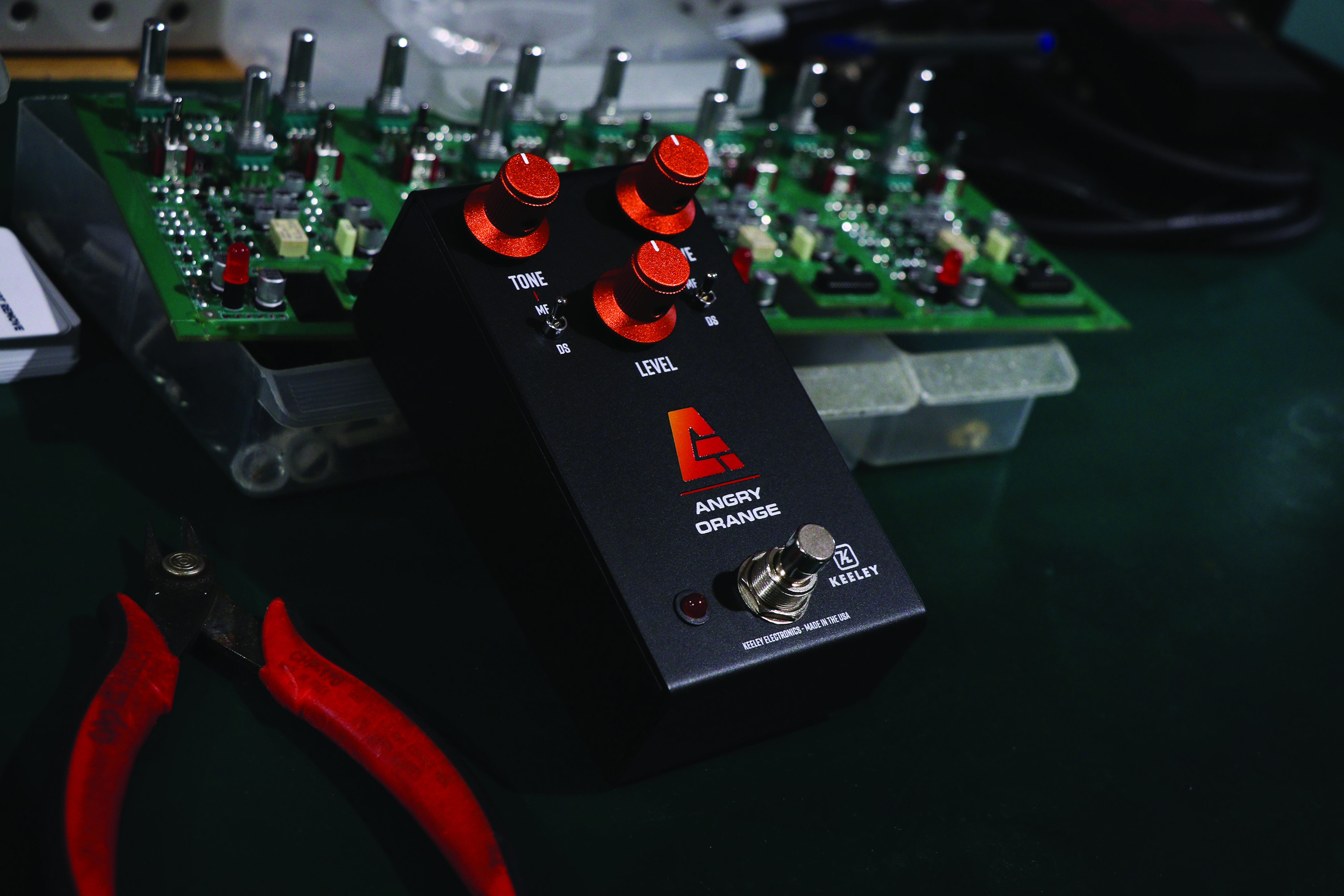
Specifications
CONTACT Keeley Electronics
PRICE $199
CONTROLS Drive, tone, level. Tone mini toggle: MF/DS. Drive mini toggle: MF (soft diode clipping)/DS (hard diode clipping)
I/O Input, output, 9–18VDC power jack
FOOTSWITCH Mechanical, buffered bypass (factory default) or user-activated true bypass
EXTRAS Can run on voltages ranging from 9 to 18vDC
SIZE 5” x 2.5” x 2” (LxWxH)
WEIGHT .78 lb
BUILT USA
Blues Disorder

The Blues Disorder’s BB and OC settings correspond to a ’90s Marshall Bluesbreaker pedal – a pocket-sized rendition of the combo amp that Eric Clapton made famous – and a Fulltone OCD, which combines beautifully saturated playing feel with a clarity that always lets the character of the guitar stand out. Having both of these cool circuits in one box makes the Disorder a blast, and Keeley’s rendition of the Bluesbreaker is also quieter than the original, offering a little bonus.
The Blues Disorder is easy to love because the BB tones with both switches set upward are so dynamic and touch-responsive that you could probably cut a gig playing it direct into the PA if push came to shove.
The Blues Disorder is a Swiss Army knife: You can do anything with it, and there’s no wrong way to go with the switching options because they all sound killer
On the other hand, the OC side with both switches down is an addictive distortion tone that can be laid on super thick while staying responsive to the guitar’s volume and your picking attack, all without masking note detail or the character of the guitar and pickups.
Good as these circuits are on their own, it’s cool to combine the BB drive circuit with the OC tone stack for a smoothly textured flavor of grind that punches out with ballsy, amp-sounding presence that’s fun to deploy for lead and dirty rhythm just by riding the guitar volume.
Turning things around and using the BB tone stack with the OC drive circuit is the bomb for distortion tones that carry a muscular presence – a presence that I found reminiscent of playing an OCD pedal through a non-master Marshall set for stout crunch. The Blues Disorder is a Swiss Army knife: You can do anything with it, and there’s no wrong way to go with the switching options because they all sound killer.
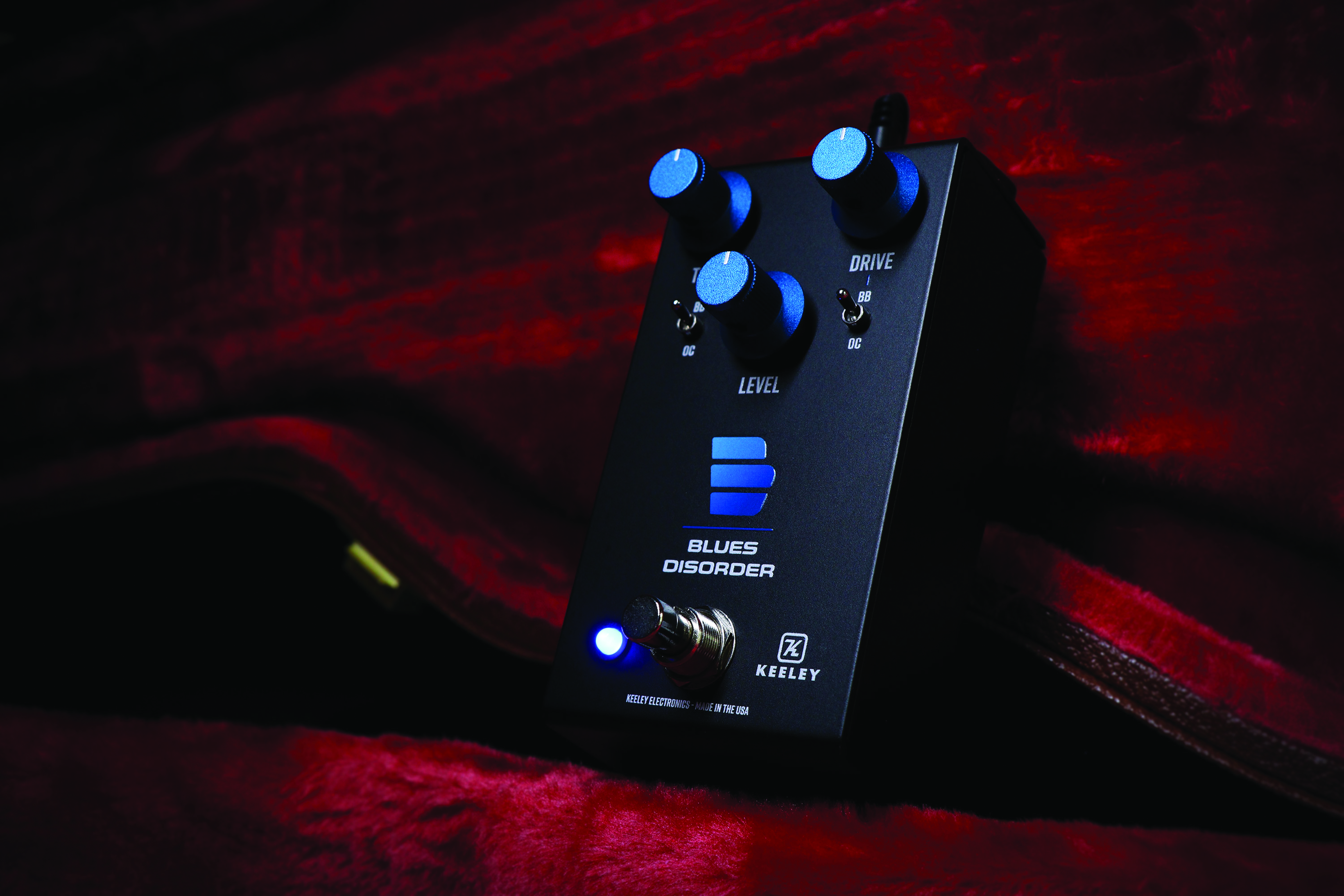
Specifications
PRICE $199
CONTROLS Drive, tone, level. Tone mini toggle: BB (active midrange boost)/OS
(HF filter). Drive mini toggle: BB (soft diode clipping)/OS (hard diode clipping)
I/O Input, output, 9–18VDC power jack
FOOTSWITCH Mechanical, buffered bypass (factory default) or true bypass
EXTRAS Can run on voltages ranging from 9 to 18v DC
SIZE 5” x 2.5” x 2” (LxWxH)
WEIGHT .78 lb
BUILT USA
Muse Driver
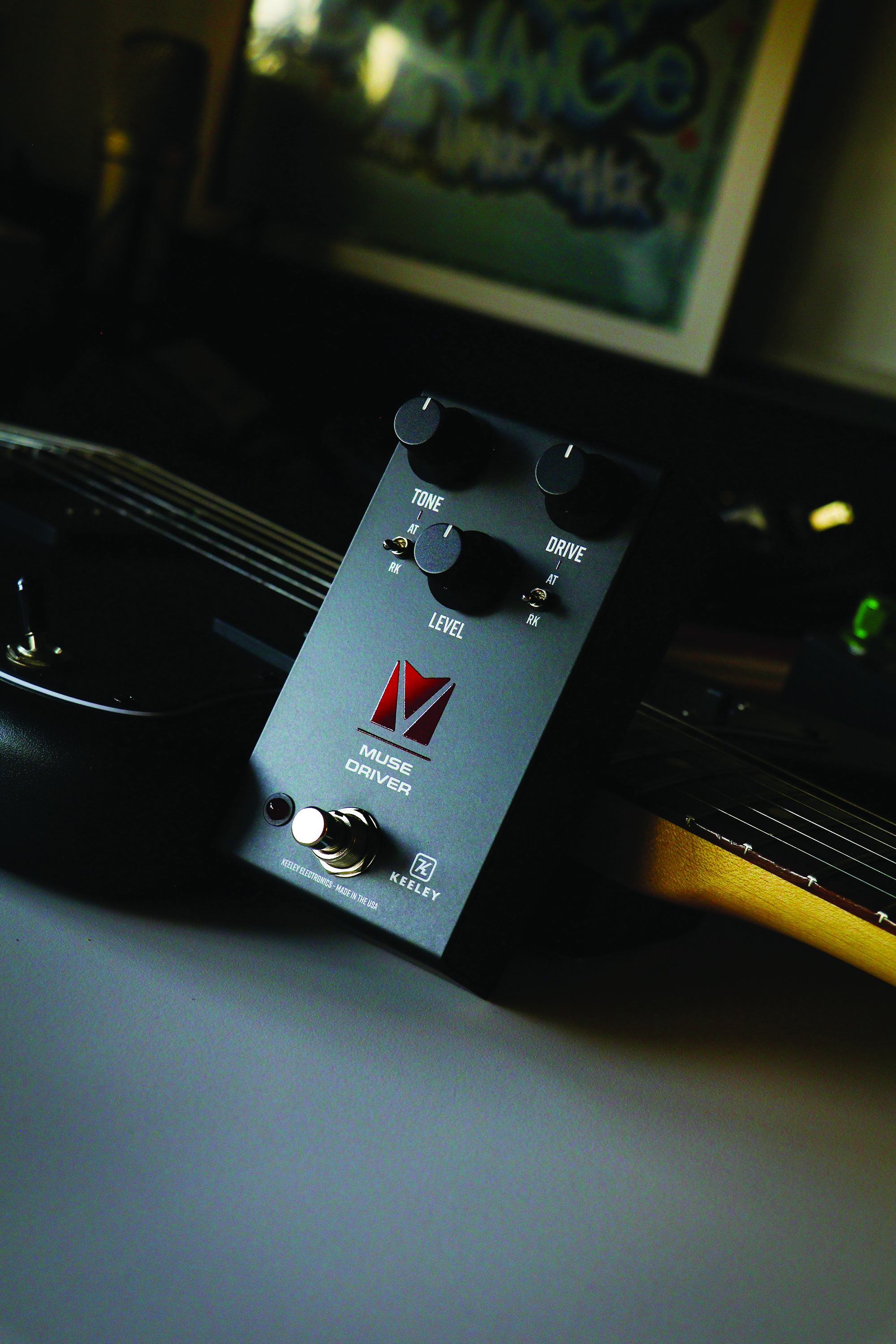
This pedal goes off-road by focusing on individual players’ tones, which are represented by the personalized switch settings: AT for Andy Timmons in the up positions and RK for Robert Keeley in the down settings. There’s no explanation of what these circuits are based on other than the left switch toggles between high-pass and full-range, respectively, for the AT and RK positions, while the right switch activates silicon LED clipping on the AT side and germanium-transistor clipping on the RK position.
As such, they’re good-sounding overdrives. The AT settings deliver smooth, singing distortion due to the symmetrical clipping, and the result is a more Boogie-like presentation. The RK setting reduces edge and adds a bass boost at 100Hz to deliver heavier, thicker tone that’s great for hard rock, metal, and anything that requires crushing rhythm and lead tones.
These very distinct distortions would be even better if you could foot-switch between them. Even so, pairing the AT drive stack with the RK tone circuit delivers a girthy Boogie-meets-Marshall sound that’s smooth and gutsy. Doing the opposite and using RK for drive toughens the OD sound, while the AT tone stack slims things down a bit for more cutting power. It proved to be a good setting for guitars with humbuckers.
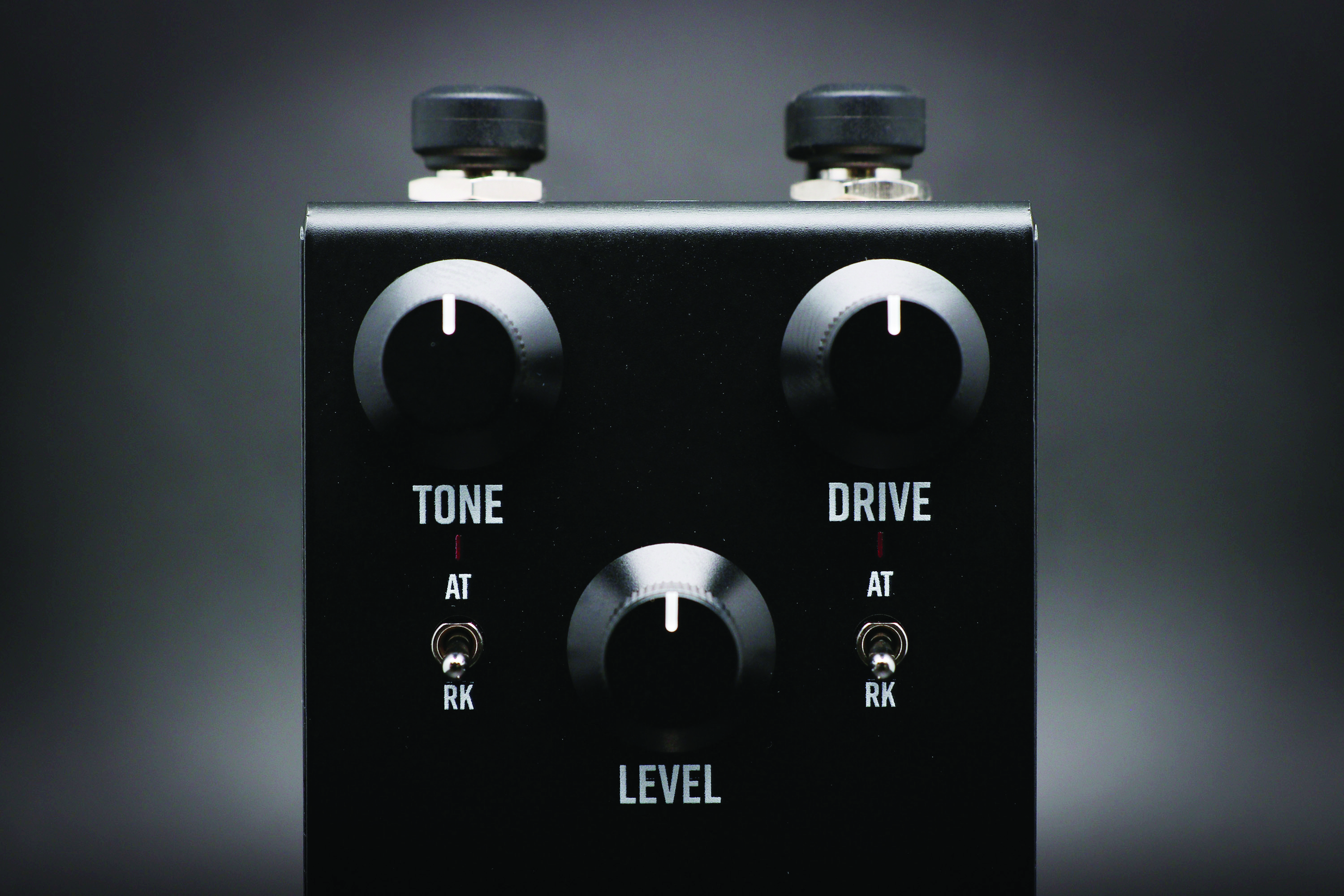
Specifications
PRICE $199
CONTROLS Drive, tone, level. Tone mini toggle: AT (high pass)/RK (full range). Drive mini toggle: AT (silicon LED clipping)/RK (germanium diode clipping)
I/O Input, output, 9-18VDC power jack
FOOTSWITCH Mechanical, buffered bypass (factory default) or true bypass
EXTRAS Can run on voltages ranging from 9 to 18VDC
SIZE 5” x 2.5” x 2” (LxWxH)
WEIGHT .64 lb
BUILT USA
Super Rodent
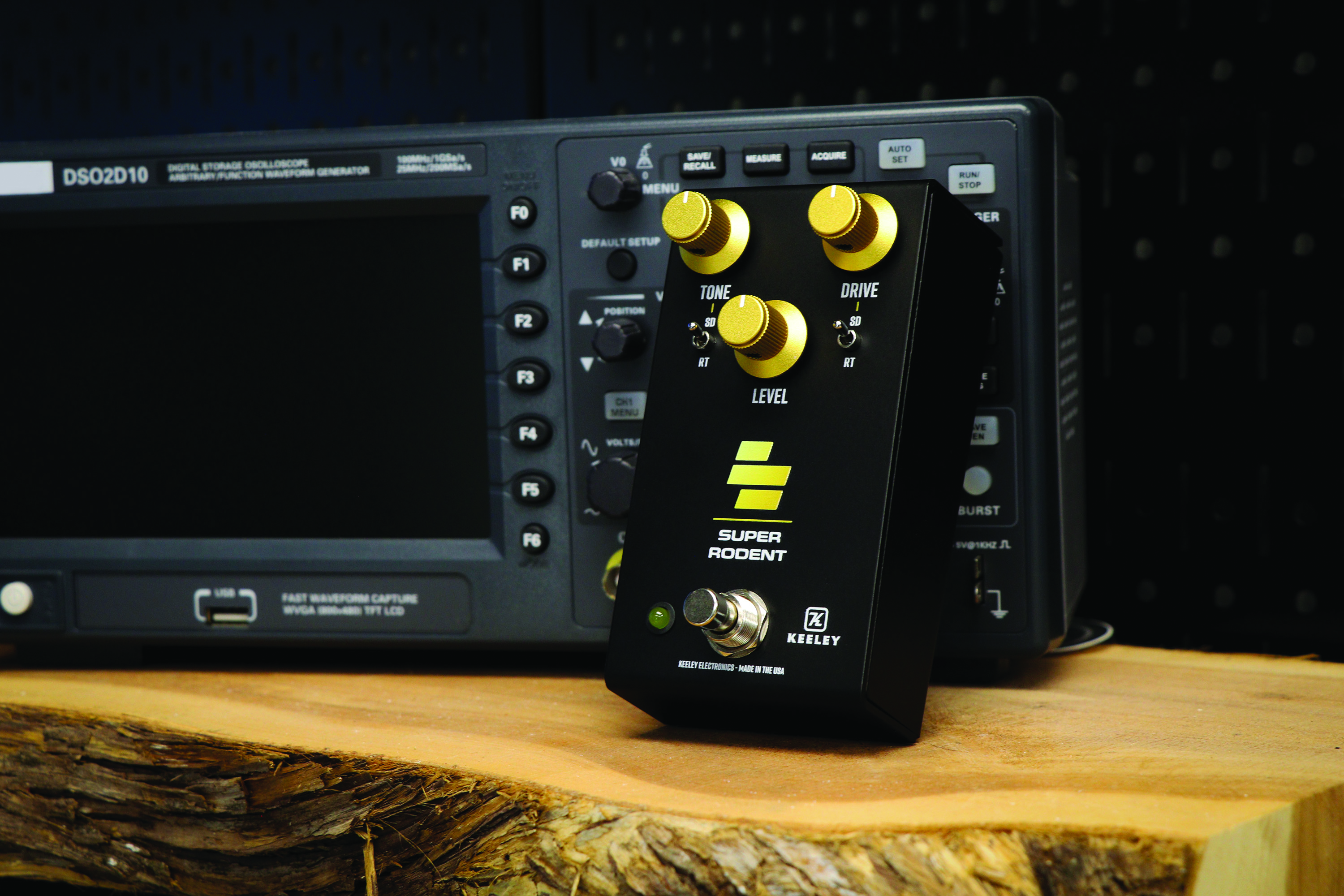
As the name suggests, the Super Rodent is based around Pro Co Rat and Boss SD-1 Super Overdrive circuits, and features SD and RT positions on its two mini toggles. With both switches set to the RT side there’s a filter for tone and a hard-clipping drive stack, and the pedal goes right to saturated fuzz, where there’s tons of gain available. The nicely tapered tone control affords sounds ranging from soft and buttery to bright and biting, but without becoming harsh or icepick-like.
The SD setting combines a mid-focus tone circuit with a soft-clip drive stack. The response is less gainy, even when drive is maxed, and it’s a little thinner and more tubular sounding, all of which makes it excellent for organic overdrive tones, especially when the gain is turned down and the level is cranked in order to push the amplifier into distortion.
The Super Rodent’s dynamic response, and touch sensitivity are more natural and amp-like as well. However, by combining the RT drive stack with the SD tone circuit, the low-end blossomed so well that it quickly became a favorite setup with all the guitars and amps I tried it with. It all goes to show the Super Rodent’s utility as a do-it-all distortion pedal that blurs the line between fuzz and distortion, while offering the best aspects of both.
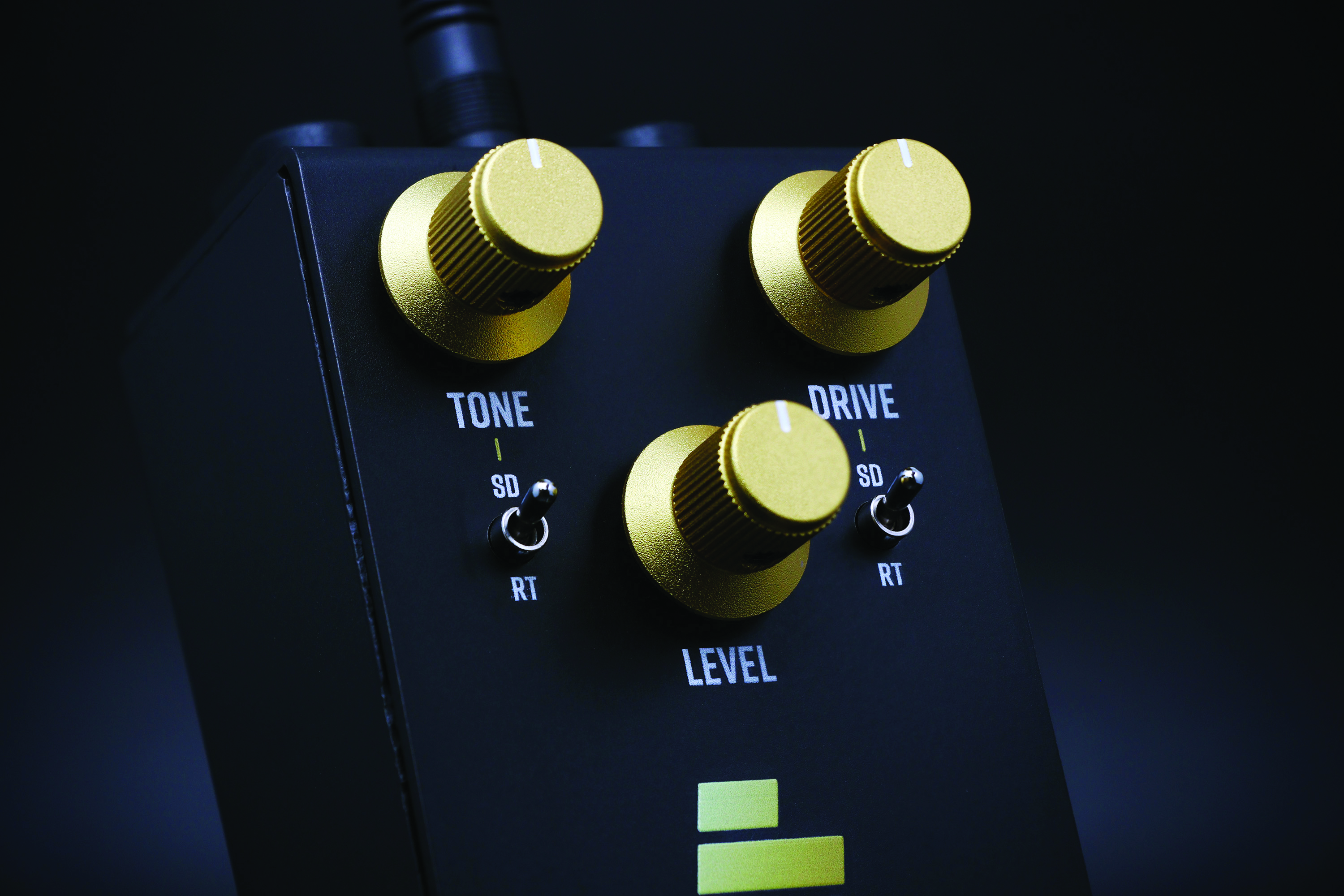
Specifications
PRICE $199
CONTROLS Drive, tone, level. Tone mini toggle: SD (mid focus)/RT (filter). Drive mini toggle: SD (soft diode clipping)/RT (hard diode clipping)
I/O Input, output, 9–18VDC power jack
FOOTSWITCH Mechanical, buffered bypass (factory default) or true bypass
EXTRAS Can run on voltages ranging from 9 to 18VDC
SIZE 5” x 2.5” x 2” (LxWxH)
WEIGHT .64 lb
BUILT USA

Art Thompson is Senior Editor of Guitar Player magazine. He has authored stories with numerous guitar greats including B.B. King, Prince and Scotty Moore and interviewed gear innovators such as Paul Reed Smith, Randall Smith and Gary Kramer. He also wrote the first book on vintage effects pedals, Stompbox. Art's busy performance schedule with three stylistically diverse groups provides ample opportunity to test-drive new guitars, amps and effects, many of which are featured in the pages of GP.
"The only thing missing is the noise from the tape loop." We review the Strymon EC-1 Single Head dTape Echo, a convincing take on a very special vintage tube Echoplex
"BigSky MX will be replacing the BigSky as my go-to reverb pedal. I’ve heard nothing that covers all the bases with such pristine and detailed audio quality." We crowned the Strymon BigSky MX the champ of multi-reverb pedals
